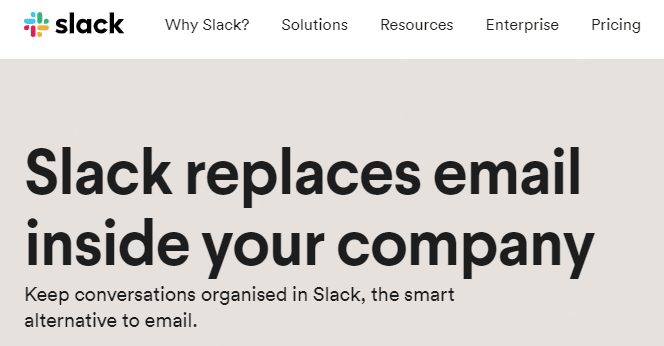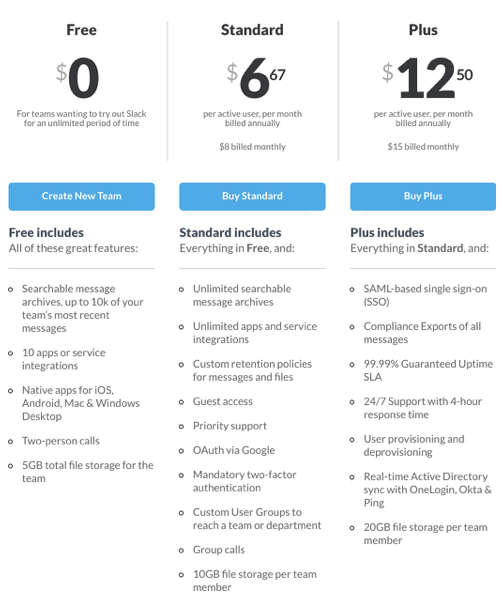Slack Business Model – Unicorn Economy Analysis
About Slack, Founders, Funders & Facts
Why are you not Slacking?? This is the question which many startup founders are now asking their team mates.
Slack wants to support people in the world who are doing good things. That’s why we offer special discount pricing for qualified nonprofit organizations and educational institutions. Slack for nonprofits. Slack for education.
Circle: Pricing Another factor in choosing an online community platform is the pricing. The platform you choose should provide a great experience for you and your members at an affordable price. Unfortunately, Slack’s pricing is one of its major weaknesses. It may not always be enough to simply compare Slack and Chanty against one another. While useful tools, pricing and customer comments are all important and should be included when making a final choice, you should also check out the recognition and awards won by every app. Very often a less known solution may turn out to be a great choice that was a winner of many industry awards such as our.
This is the kind of brand that you need to build for a B2B SaaS business.
Slack is a cloud-based team collaboration tool which began as an internal tool used by their company, Tiny Speck, in the development of a product. The name is actually an acronym, which means, “Searchable Log of All Conversation and Knowledge”.
Slack Founders : Co-Founded by Stewart Butterfield (Co-Founded and Sold Flickr to Yahoo!), Eric Costello, Cal Henderson, and Serguei Mourachov.
Slack Funding : They raised about $43 million in April 2014. In October 2014, raised $120 million with a $1.2 billion valuation led by Kleiner Perkins Caufield & Byers and Google Ventures. Earlier investors Andreessen Horowitz, Accel Partners and The Social+Capital Partnership also participated in this round. A funding round that valued the company at $2.76 billion has investments from New investors including Institutional Venture Partners, Horizons Ventures, Index Ventures and DST Global. In April 2016, the company raised another $160 million. Total Valuation today sits north of $3 Billion.
Slack Business Model
Slack Business model is the dream of many venture capitalists seeing their investment burst into funds within weeks of the last round is an investors delight. Slack ultimately gave every one that they needed.
It is funny how slack got investment offers from VCs after they got to know about slack from one of their portfolio firms.
Slack was youngest and the fastest unicorn that silicon valley has seen till date.
Slack Business Model
Slack is a Freemium Business Model and primarily relies on users needing the information that they slacked some time back and if that message is beyond the free thresh hold then Slack would charge money as a subscription to read those messages on a per user basis.
Slack Pricing Model Excel
Slack thus is a primarily enterprise level B2B SaaS company but on funnier side of the business i.e. chat whereas Palantir is Enterprise SaaS company for more trickier aspects of the business like research.
Similar to the Slack Business Model is How does Discord Make Money. Have a read.
You may also want to Read :NetFlix Business Model – B2C SaaS
Before we move on to Slack business model, lets see how slack works.
How Slack Works
Simply put, Slack is the market leader for enterprise communication software. Slack wants to integrate everything you need at the office onto one single platform, by becoming a platform for the creation of new software. Slack is investing $80 million in startups that build software and apps for Slack.
Slack Pricing Model Calculator
Basically Slack integrates with many apps to streamline the entire knowledge sharing and tracking at the workplace. For e.g.
Slack App Directory of apps that integrate with Slack. Over 160 apps categorize into the design, developer tools, etc., and are quick and easy to install. Slack teams up with other collaboration platforms, such as Trello, an app for product management and Github, a code hosting service. A new relationship with Skype makes it fast and simple for users to integrate Skype via Slack’s platform.
Slack Business Model
Slack is essentially a collaboration and communication tool for the workplace. Communication leads to sharing of notes, messages, links emails etc.
Consider this example: 100 Users in a company, each one exchanging at least 10 messages per day i.e. 1000 messages per day for the company, which means 30,000 messages for the company within 30 days of operation.

Now if anyone wants to access the messages of the first day i.e. beyond the immediate 10,000 messages, then the company will be charged for that user.
Per month pricing plans range from $6.67 to $12 per ACTIVE USER.


The term Active user is of importance here, since the company gets billed only if the user is active on the platform and not a “per seat” kind of billing like in the majority of enterprise software. For e.g. 100 Users in a company, but only 90 use the software for any given month, then the company pays only for 90 users and not 100 users like it is with large SaaS companies. Facebook for work, Google for work may come up with similar solutions and offer it to their existing customers.
You may also want to Read :How does FaceBook make Money
Slack Revenue Lines
You may also want to Read : Skype Business Model
I feel Slack can make money by becoming someone like AWS Marketplace, Let the platform for communication be used by anyone and let other vendors develop the surrounding software which scales this up.
Slack has following revenue lines:
- Slack for Teams : Single Team with members
- Slack for Enterprises : Multiple Teams
Slack Pricing Model Explained
Disclaimer : Please use caution while using this information on Slack Business Model and How does Slack Make Money. Indemnification of author and blog is mandatory while using this information.
